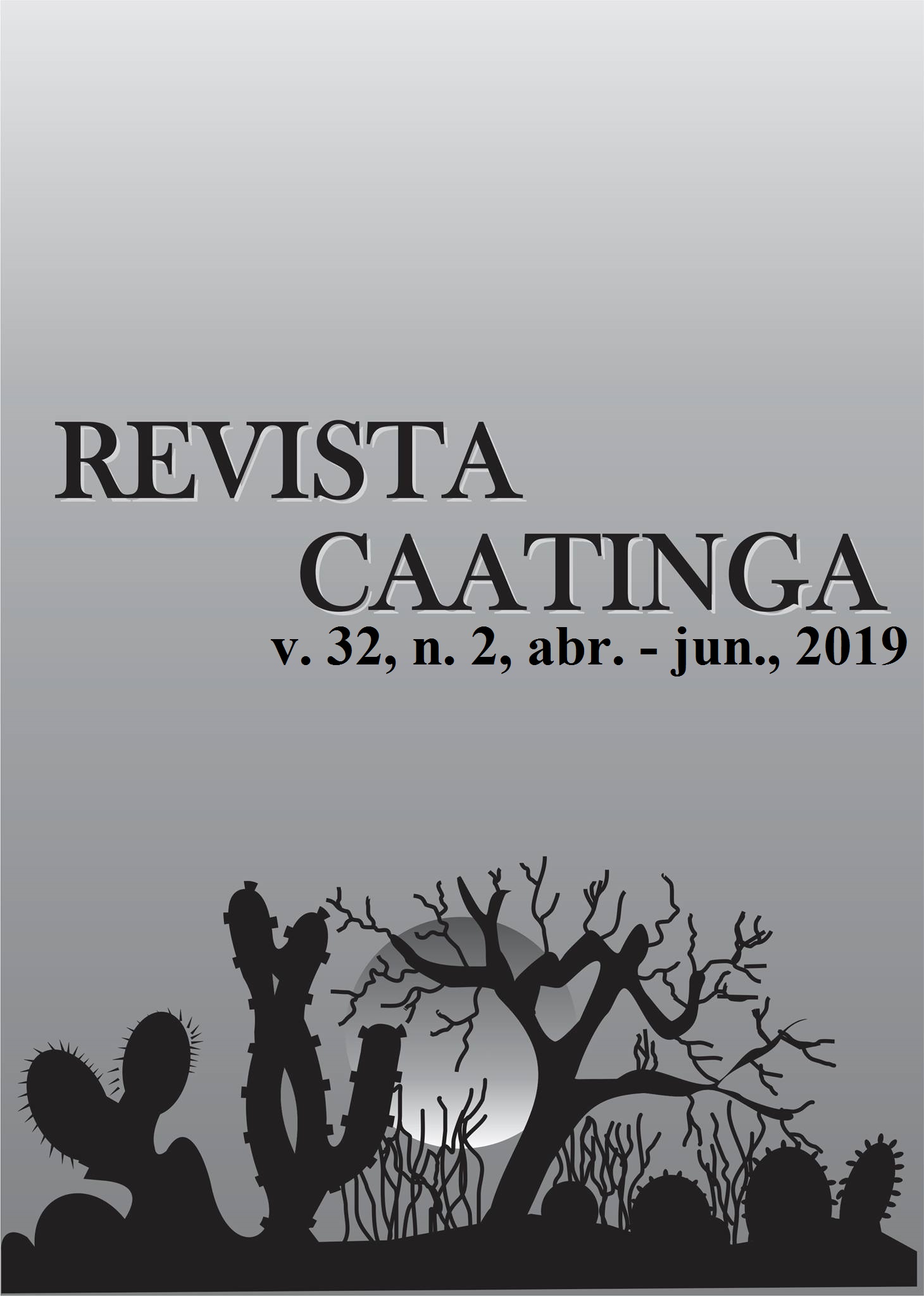GAS EXCHANGES, QUANTUM YIELD AND PHOTOSYNTHETIC PIGMENTS OF WEST INDIAN CHERRY UNDER SALT STRESS AND POTASSIUM FERTILIZATION
DOI:
https://doi.org/10.1590/1983-21252019v32n216rcKeywords:
Malpighia emarginata. Physiology. Potassium. Salinity.Abstract
Water resources in the semi-arid region of Northeast Brazil commonly contain high salt concentrations, compromising the quality of water for agriculture. Thus, adopting techniques that make the use of these resources feasible in agriculture is fundamental. The present study aimed to evaluate the gas exchanges, quantum yield and photosynthetic pigments of grafted West Indian cherry subjected to salt stress and potassium fertilization under greenhouse conditions in the municipality of Campina Grande, PB, Brazil. Treatments were distributed in randomized blocks, composed of two levels of electrical conductivity – ECw (0.8 and 3.8 dS m-1) of water and four doses of potassium (50, 75, 100 and 125% of the dose recommended for the crop), with three replicates. The dose relative to 100% corresponded to 19.8 g of K2O per plant. Gas exchanges, chlorophyll a fluorescence and photosynthetic pigments of West Indian cherry are negatively affected by irrigation using water with electrical conductivity of 3.8 dS m-1, which compromises the photosynthetic apparatus of the plant, a situation evidenced by the reduction in photosystem II quantum efficiency. Increasing potassium doses led to increments in transpiration, chlorophyll a maximum fluorescence and chlorophyll b content in West Indian cherry grown under salt stress, but do not attenuate the negative effects of irrigation with 3.8 dS m-1 water on its potential photochemical efficiency.
Downloads
Downloads
Published
Issue
Section
License
Os Autores que publicam na Revista Caatinga concordam com os seguintes termos:
a) Os Autores mantêm os direitos autorais e concedem à revista o direito de primeira publicação, com o trabalho simultaneamente licenciado sob a Licença Creative Commons do tipo atribuição CC-BY, para todo o conteúdo do periódico, exceto onde estiver identificado, que permite o compartilhamento do trabalho com reconhecimento da autoria e publicação inicial nesta revista, sem fins comerciais.
b) Os Autores têm autorização para distribuição não-exclusiva da versão do trabalho publicada nesta revista (ex.: publicar em repositório institucional ou como capítulo de livro), com reconhecimento de autoria e publicação inicial nesta revista.
c) Os Autores têm permissão e são estimulados a publicar e distribuir seu trabalho online (ex.: em repositórios institucionais ou na sua página pessoal) a qualquer ponto antes ou durante o processo editorial, já que isso pode gerar alterações produtivas, bem como aumentar o impacto e a citação do trabalho publicado (Veja O Efeito do Acesso Livre).







